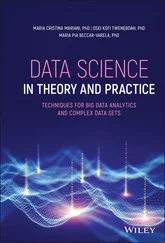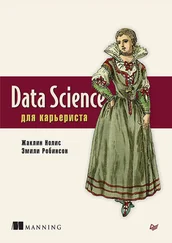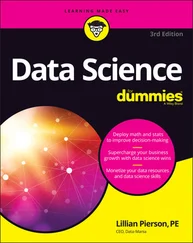14 CHAPTER 8: Valuing Data with Statistical Analysis and Enabling Meaningful Access Deriving Value: Managing Data as an Asset Accessibility to Data: Not All Users Are Equal Providing Self-Service to Data Access: The Importance of Adding Controls Ranking Datasets Using a Bottom-Up Approach for Data Governance How Various Industries Use Data and AI Benefiting from Statistics Summary
15 CHAPTER 9: Constructing for the Long-Term The Need to Change Habits: Avoiding Hard-Coding Extending the Value of Data Through AI Polyglot Persistence Benefiting from Data Literacy Summary
16 CHAPTER 10: A Journey's End: An IA for AI Development Efforts for AI Essential Elements: Cloud-Based Computing, Data, and Analytics Driving Action: Context, Content, and Decision-Makers Keep It Simple The Silo Is Dead; Long Live the Silo Taxonomy: Organizing Data Zones Capabilities for an Open Platform Summary
17 Appendix: Glossary of Terms
18 Index
19 End User License Agreement
1 Chapter 1Figure 1-1: The AI Ladder to achieve a full complement of data and analytics...Figure 1-2: The ladder is part of a repetitive climb to continual improvemen...Figure 1-3: Current state ⇦ future state ⇦ current stateFigure 1-4: Ends and means model
2 Chapter 2Figure 2-1: Trust matrixFigure 2-2: Breadth and depth sliversFigure 2-3: GradingFigure 2-4: Data and AI democratizationFigure 2-5: Recognizing that the ability to skillfully ask questions is the ...
3 Chapter 3Figure 3-1: Monitors at Mission Control Center for the International Space S...Figure 3-2: A closer viewFigure 3-3: Monitors in a hospital emergency roomFigure 3-4: An electrocardiogram pattern showing normal and abnormal heartbe...Figure 3-5: Data governanceFigure 3-6: An ontological modelFigure 3-7: InferenceFigure 3-8: Blood test results showing normalcy, part AFigure 3-9: Blood test results showing normalcy, part BFigure 3-10: Recognizing preconditions
4 Chapter 4Figure 4-1: Reviewing atomic dataFigure 4-2: Simplified information architecture for an EDWFigure 4-3: YARN architecture
5 Chapter 5Figure 5-1: Starter set zonesFigure 5-2: Consistent to ActiveFigure 5-3: Consistent to InactiveFigure 5-4: Consistent to CISCO_INACTIVE_INDFigure 5-5: Consistent to StatusFigure 5-6: Consistent to WorksheetsFigure 5-7: Consistent to Implied MeaningFigure 5-8: Consistent to MetadataFigure 5-9: Misrepresenting the nature of data governanceFigure 5-10: Core elements of a data topologyFigure 5-11: Primitive zone typesFigure 5-12: Data lakes, data ponds, and data puddles
6 Chapter 6Figure 6-1: ChallengesFigure 6-2: Seven practicesFigure 6-3: Building to an MVPFigure 6-4: DevOps shift-left approachFigure 6-5: Core capabilities for DevOps and MLOpsFigure 6-6: Identifying DataOps stakeholdersFigure 6-7: Building blocks for AIOps
7 Chapter 7Figure 7-1: Data to wisdomFigure 7-2: Dialing data governance
8 Chapter 8Figure 8-1: Data value chainFigure 8-2: SkewnessFigure 8-3: KurtosisFigure 8-4: Identifying outliersFigure 8-5: Gaussian distributionFigure 8-6: Gaussian histogram plotFigure 8-7: Gaussian distribution with low and high variance
9 Chapter 9Figure 9-1: Caesar's Entertainment operating company asset valuesFigure 9-2: What color are clouds?Figure 9-3: Digitization misses more data than is actually collected.
10 Chapter 10Figure 10-1: Cloud topographyFigure 10-2: Compute and storage capabilitiesFigure 10-3: Analytic intensityFigure 10-4: Communication flowsFigure 10-5: Flight paths for model executionFigure 10-6: Driving prediction, automation, and optimizationFigure 10-7: Transitive closure and access privilegesFigure 10-8: A proliferation of lines serves to highlight the need for line ...Figure 10-9: Taxonomic representationFigure 10-10: Virtualized data zones
1 Cover
2 Table of Contents
3 Begin Reading
1 i
2 ii
3 iii
4 iv
5 v
6 vi
7 vii
8 ix
9 xi
10 xix
11 xx
12 xxi
13 xxiii
14 xxiv
15 xxv
16 xxvi
17 1
18 2
19 3
20 4
21 5
22 6
23 7
24 8
25 9
26 10
27 11
28 12
29 13
30 14
31 15
32 16
33 17
34 18
35 19
36 20
37 21
38 22
39 23
40 24
41 25
42 26
43 27
44 28
45 29
46 30
47 31
48 32
49 33
50 35
51 36
52 37
53 38
54 39
55 40
56 41
57 42
58 43
59 44
60 45
61 46
62 47
63 48
64 49
65 50
66 51
67 52
68 53
69 54
70 55
71 57
72 58
73 59
74 60
75 61
76 62
77 63
78 64
79 65
80 66
81 67
82 68
83 69
84 70
85 71
86 72
87 73
88 74
89 75
90 76
91 77
92 78
93 79
94 80
95 81
96 82
97 83
98 84
99 85
100 87
101 88
102 89
103 90
104 91
105 92
106 93
107 94
108 95
109 96
110 97
111 98
112 99
113 100
114 101
115 102
116 103
117 104
118 105
119 106
120 107
121 108
122 109
123 110
124 111
125 112
126 113
127 114
128 115
129 116
130 117
131 118
132 119
133 121
134 122
135 123
136 124
137 125
138 126
139 127
140 128
141 129
142 130
143 131
144 132
145 133
146 134
147 135
148 136
149 137
150 138
151 139
152 140
153 141
154 142
155 143
156 144
157 145
158 147
159 148
160 149
161 150
162 151
163 152
164 153
165 154
166 155
167 156
168 157
169 158
170 159
171 160
172 161
173 162
174 163
175 164
176 165
177 166
178 167
179 168
180 169
181 170
182 171
183 172
184 173
185 175
186 176
187 177
188 178
189 179
190 180
191 181
192 182
193 183
194 184
195 185
196 186
197 187
198 188
199 189
200 190
201 191
202 192
203 193
204 194
205 195
206 196
207 197
208 198
209 199
210 200
211 201
212 202
213 203
214 204
215 205
216 206
217 207
218 208
219 209
220 210
221 211
222 212
223 213
224 214
225 215
226 216
227 217
228 218
229 219
230 220
231 221
232 223
233 224
234 225
235 226
236 227
237 228
238 229
239 230
240 231
241 232
242 233
243 234
244 235
245 236
246 237
247 238
248 239
249 240
250 241
251 242
252 243
253 244
254 245
255 246
256 247
257 248
258 249
259 250
260 251
261 252
262 253
263 254
264 255
265 256
266 257
267 258
268 259
269 260
270 261
271 263
272 264
273 265
274 266
275 267
276 269
277 270
278 271
279 272
280 273
281 274
282 275
283 276
284 277
285 278
286 279
The authors have obviously explored the paths toward an efficient information architecture. There is value in learning from their experience. If you have responsibility for or influence over how your organization uses artificial intelligence you will find Smarter Data Science an invaluable read. It is noteworthy that the book is written with a sense of scope that lends to its credibility. So much written about AI technologies today seems to assume a technical vacuum. We are not all working in startups! We have legacy technology that needs to be considered. The authors have created an excellent resource that acknowledges that enterprise context is a nuanced and important problem. The ideas are presented in a logical and clear format that is suitable to the technologist as well as the businessperson.
Читать дальше


![Роман Зыков - Роман с Data Science. Как монетизировать большие данные [litres]](/books/438007/roman-zykov-roman-s-data-science-kak-monetizirova-thumb.webp)








